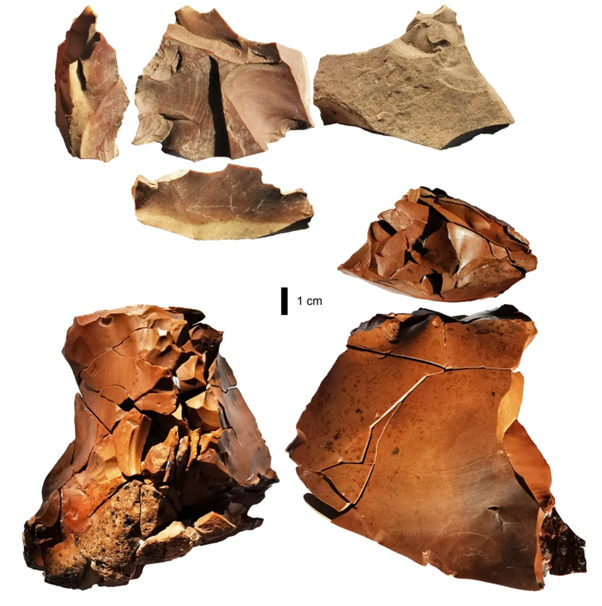Laili rock shelter on the island of Timor, north of Australia, appears to provide the smoking gun to rule out what was once considered the obvious route for one of the greatest and least understood migrations in human history. In the process, it may tell us something important about how people first arrived on Timor itself, and islands like it.
The ancient presence of humans in Australia provides a major puzzle for anthropologists, particularly since it became clear how far back that began. Australia’s wildlife proves it was never connected by a land bridge to Southeast Asia, so the first inhabitants must have had the capacity to cross wide expanses of water. Yet interaction with what is now Indonesia apparently stopped, only resuming far more recently.
Initially, it was widely believed that the first Australians reached their new home from Timor, now referred to as the “southern route.” Although today this requires crossing hundreds of kilometers of water, during the last Ice Age when sea levels were lower, Australia stretched much further northwest.
However, for some time Professor Sue O’Connor of the Australian National University and other anthropologists have been raising questions about this path. There is no evidence of human habitation on Timor prior to around 50,000 years ago. Meanwhile, the oldest stone tools in Australia have been found in a layer of sediment deposited at Madjedbebe 65,000 years ago.
Around a dozen sites of human habitation on Timor have been excavated, with no signs of an earlier human presence. However, O’ Connor told IFLScience that at most of these sites, the oldest evidence of humans sits directly on bedrock. “If the human presence is at the base of the cave a big erosion event may have removed all the sediment,” leaving uncertainty as to what was there before.
However, at Laili on Timor’s north coast, O’Connor and co-authors of a new study found layers thick with tools, the remains of fire, and fishbones dating back to around 44,000 years ago, then a sudden shift. Below were meters of yellow sediment, with no signs of human presence other than the occasional younger tool or bone that had been pushed down. The contrast between this yellow sediment and the darker layers above formed through the mixture of ash makes this “a non-occupation layer” in O’Connor’s words, showing the site was definitely not occupied 55,000 years ago.
Multifunctional stone tools found in layer 20 at Laili, the first human that shows evidence of human presence, in stark contrast to what is below.
Theoretically, people might have been in Timor at the time, but chosen to live elsewhere, but O’Connor considers this unlikely. Laili holds the oldest evidence of humans on Timor yet, found after many searches. Moreover, it’s hard to imagine inhabitants ignoring such an attractive site for long. It sits near a large river that would have provided fresh water, and is within walking distance of the sea, where Timor’s residents would have got most of their food before agriculture.
Where other sites sometimes have only a few signs of humans in their oldest inhabited layers, suggesting occasional use by small bands of people, Laili is rich with signs of humanity from the first dark layer.
In some places, the evidence of ancient human presence is now submerged, after attractive coastal plains sunk when the Ice Age ended. However, O’Connor told IFLScience that Timor is different, plunging to the edge of the continental shelf almost immediately offshore. Geologic activity has also been raising the island, almost keeping place with sea level. “Laili Is 4 kilometers [2.5 miles] from the sea today; 45,000 years ago it would have been 5 kilometers [3.1 miles],” she said. There’s little scope for former sites to be lost.
This leaves two explanations for Australia’s habitation. Either the dates at Madjedbebe are wrong, as a few anthropologists claim, and Australia was also uninhabited until about 45,000 years ago, or people got there another way.
Supporters of the first idea note that it is the sediments, not the tools, that were dated at Madjedbebe. Perhaps humans arrived much later, but deliberately or accidentally buried tools in older deposits.
Alternatively, they arrived via the “northern route”, crossing the Wallace Line to Sulawesi and then island hopping to New Guinea, connected to Australia at the time.
Humans besides Homo sapiens lived on Sulawesi 200,000 years ago, but the oldest signs of our own species are a similar age to O’Connor’s finds on Timor. However, Sulawesi is a much larger and less explored island. It’s plausible humans were there long before they started painting the walls.
O’Connor also told IFLScience that Sulawesi would have been a much more attractive location for humans looking to expand beyond mainland Southeast Asia. It has plenty of game such as deer, pigs, and possums that would have been familiar to arrivals from the mainland. “Timor has nothing but rats and bats,” O’Connor told IFLScience. Indeed, the absence of large mammals is part of the reason most caves there lack pre-human sediment, as cave users can track in mud or leave droppings.
Timor’s sparse resources might not have mattered if people got there by chance, but the team doubts that was the case. “The traditional view held by researchers is that early humans who were making these significant water crossings were stumbling upon these islands by mistake, largely because it was so long ago,” co-author, ANU’s Dr Shimona Kealy, said in a statement.
“Their arrival on Timor was no accident. This was a major colonization effort, evident through the sheer number of people who were making the journey. It’s a testament to these peoples’ level of maritime technology and the boats they created, but also their confidence and competence in braving maritime crossings.”
The work is published open access in the journal Nature Communications.
Source Link: Timor Cave Discredits Once-Favored Explanation For How People Reached Australia
